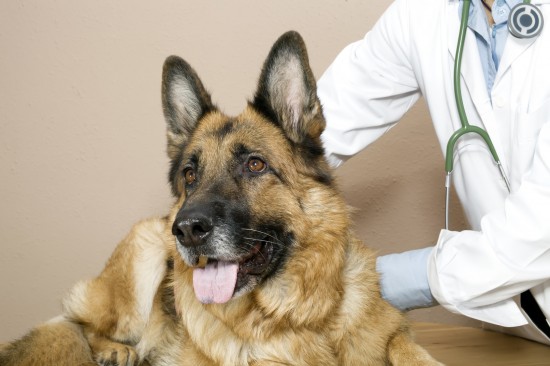
One of the major health concerns of a Weimaraner, as well as other large breeds of dog is hip dysplasia. Cats suffer from hip dysplasia too, but it is seen less commonly and the symptoms are less thre...
One of the major health concerns of a Weimaraner, as well as other large breeds of dog is hip dysplasia. Cats suffer from hip dysplasia too, but it is seen less commonly and the symptoms are less threatening. Hip dysplasia can also be found in humans but in rare cases only.
Canine hip dysplasia is a developmental orthopedic disease in which there is an abnormal development of the hip joint. This leads to looseness in the joints that is supposed to be snug. The looseness causes cartilage damage and eventually results to painful progressive arthritis that can cripple your beloved Weimaraner. Hip dysplasia is different from arthritis in the hips but is the common cause of it.
This disorder of the joint is proven to be caused by genetic factors. If two Weims carrying genetic material for hip dysplasia were bred, then their offspring will definitely inherit the disease. Apart from that, your dog's environment also contribute to the development of the disease. Your dog's nutrition should be restricted but not to the point that you will restrict fat and calorie content in his diet. Restriction here means to prevent your Weimaraner from becoming overweight. Although exercise is recommended to keep your dog from becoming obese, the activities should be controlled to prevent unwarranted stress and trauma to the joint. Climbing stairs and jumping into and out of pick-up trucks are some of the activities to be avoided.
Puppies as young as five months will begin to show signs of the disease. Pain and discomfort during and after vigorous exercise is usually seen to puppies in this age. Without immediate attention, these dogs may be crippled at two years of age. In most cases, however, symptoms begin to show during the middle or later years in the dog's life. Other signs include decreased activity, difficulty rising, reluctance to use stairs, reluctance to jump or stand on hind limbs, pain and soreness after heavy exercise. The dog will also suffer pain when weight is being placed on the joint.
Diagnosis of hip dysplasia is based on the combination of physical exam and x-rays. There is no complete cure for hip dysplasia, however, there are methods to alleviate the clinical signs. These methods include pain medications, weight loss programs, controlled exercise and physical therapy. Another option is through surgical procedure, that is if conservative medication cannot control the problem. There are two types of surgery- one involves reshaping the joint to reduce pain or help movement and another is hip replacement for animals which completely replaces the damaged hip with an artificial joint.
 Keeping Turtles In An Outside Pond In The Uk
Keeping Turtles I
Keeping Turtles In An Outside Pond In The Uk
Keeping Turtles I
 Enjoying The Snow With Your Dog
Enjoying The Snow
Enjoying The Snow With Your Dog
Enjoying The Snow
 Ovarian Remnant Syndrome - Why A Spayed Dog Might Appear To Be In Season
Ovarian Remnant S
Ovarian Remnant Syndrome - Why A Spayed Dog Might Appear To Be In Season
Ovarian Remnant S
 Top Six Benefits Of Dog Grooming By Millcreek Veterinary Clinic
Top Six Benefits Of Dog Grooming By Millcreek Veterinary C
Top Six Benefits Of Dog Grooming By Millcreek Veterinary Clinic
Top Six Benefits Of Dog Grooming By Millcreek Veterinary C
 Is A Terrier The Right Breed For You?
Is A Terrier The
Is A Terrier The Right Breed For You?
Is A Terrier The
Copyright © 2005-2016 Pet Information All Rights Reserved
Contact us: www162date@outlook.com